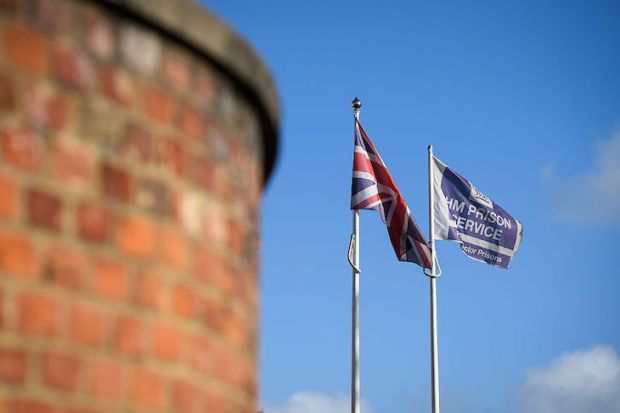“Was Red Wedge pro-Labour, or did we just hate Tories?” asked musician Billy Bragg, when he launched his tactical vote site ‘Vote Dorset’ in 2001. He was trying to solve a problem British progressives have faced at every election since the re-emergence of the Liberals as a political force in the 1960s: while conservatives were united behind a single party, their forces were split between two or more.
Following the strange rebirth of multi-party politics over the past year – and with some Remainers keen to stop a Conservative majority at all costs – the clamour to vote tactically has scarcely been louder. Within hours of the election date being agreed, two sites – both with very different approaches – emerged seeking to help voters do just that.
The first, by campaign organisation Best for Britain, has used an MRP poll of 46,000 people to make its predictions. In short, this means examining the underlying demographic and electoral factors in each seat and extrapolating results based on how each of these groups are behaving. The huge sample size gives it the statistical power to examine the behaviour even of small groups of voters.
For instance, it may be that voters aged 25-40 with degrees, living in private rental accommodation in areas that voted heavily for Remain are moving disproportionately away from the Labour party and towards the Liberal Democrats. If then a seat such as Putney has a disproportionate number of these voters, it will be nudged significantly in a yellow direction. Conversely, the poll might show the Labour vote holding up strongly among voters from certain ethnic minority communities. So a seat where they are particularly well-represented would stay more firmly in the Labour column.
The combination of all these different, complex factors yields a final result for the given constituency; when the candidates’ parties and individual views are taken into account, a tactical proposition is made. This is painstaking and expensive work, costing many tens – if not hundreds of – thousands. It often spits out seemingly bizarre “go home, Hitchin & Harpenden, you’re drunk” results that has riled some on Twitter. Partisans, by their nature, tend to condemn any suggestion that doesn’t result in a vote for their preferred party everywhere.
The methodology of the second site, tactical.vote, is much simpler. Look at the result from last time, if the Conservatives are in first or second place, recommend the other party; if they’re not, don’t make a prediction. Unsurprisingly, given the two-party nature of the 2017 election (in England, at least), it recommends a Labour vote just about everywhere.
In its FAQs, the site criticises those calling for a more complex approach weighted to previous voter habits, though does not touch on the issue of underlying demographics.
So who has the better approach?
It is widely accepted that the British electorate is in its most volatile state since the Second World War. Not only have the Liberal Democrats and the Brexit party surged in the polls since 2017 but the number of voters switching between parties in complex ways is often hidden by headline figures.
When parties are gaining disproportionate ground among particular demographics, gains from third place are far from unknown. When middle-class voters flocked to Tony Blair in 1997, seats such as Hastings and Rye and St Albans were both gained by Labour from a distant third place, leapfrogging the Lib Dems. In 2015, numerous Scottish seats saw the SNP go from fourth place to victory. In East Renfrewshire, the SNP rose from nine per cent to 42 per cent to claim the seat. Just two years later, however, it was the Conservatives who leapt from third to first – while a simple tactical appeal based on historical results would have told them they were wasting their time.
Majoritarian systems throw up weird results. Never more so than when in a state of flux. In America, predictions become much easier – not only as a result of having just two parties – but by a plentiful number of state and district-based polls. Some states like Wisconsin often see significant swings, while others like North Carolina, less so – a factor Nate Silver refers to as “voter elasticity”.
Constituency polls in the UK, however, have been few and far between in recent years. Survation, however, has conducted at least three for the Lib Dems this autumn: in Finchley and Golders Green, North East Somerset and Cambridge – where in 2017, the party received six per cent (third), eight per cent (third) and 29 per cent (third) respectively. These polls should be taken with a slight pinch of salt not because there is anything suspicious about the Survation methodology – far from it – but because parties tend to release polls that support the story they’re trying to tell and keep the others private.
Two things, however, are striking.
First, the Liberal Democrats have surged in each to 41 per cent (1st), 28 per cent (2nd) and 39 per cent (1st) respectively.
Secondly and perhaps more curiously, these figures are very much within the ballpark of their estimated vote share in the European elections in those seats: 34 per cent, 30 per cent and 43 per cent. Indeed, the naming of Luciana Berger MP as the Liberal Democrat candidate in Finchley may have caused a further uplift on their standing there last May.
Liberal Democrat vote share
General Election 2017
European Elections 2019
Constituency poll, Autumn 2019
Finchley & Golders Green
6
34
41
North East Somerset
8
30
28
Cambridge
29
43
39
European elections have not historically been a good predictor of party success at a general election. But that was in an era when our relationship with the EU hardly featured in people’s top political concerns.
Not only do many Remainers now prioritise Brexit more than Leavers ever did, the niche the Liberal Democrats have carved for themselves is more distinct than that which divides, for instance, the Conservatives and Brexit party.
As such, it is totally reasonable to assume the areas where they performed well in May (when they achieved 20 per cent nationally) are the same as those where they are surging now (on an 18 per cent polling average).
With such volatility, the campaign could – and likely will – change everything. It is possible that Jeremy Corbyn has been underestimated again, Labour will surge, their Lib Dem defectors will return, while Conservative Remainers flock back to Boris for fear of Labour.
Equally, we may see an “I agree with Jo” moment, where large numbers of voters decide they like neither leading choice for Number 10. Best for Britain, to their credit, will be running another MRP in the coming weeks. It may be, by sheer happenstance, that tactical.vote were right all along, much as it seems unlikely from this vantage point.
Psephology is perhaps the art of the plausible – and predictions are overwhelmingly tough when guiding voters to cast their vote in sophisticated ways. Kudos to all those who try.
Got something to add? Join the discussion and comment below.
Get 10 issues for just $10
Subscribe to The Spectator Australia today for the next 10 magazine issues, plus full online access, for just $10.




















Comments
Don't miss out
Join the conversation with other Spectator Australia readers. Subscribe to leave a comment.
SUBSCRIBEAlready a subscriber? Log in